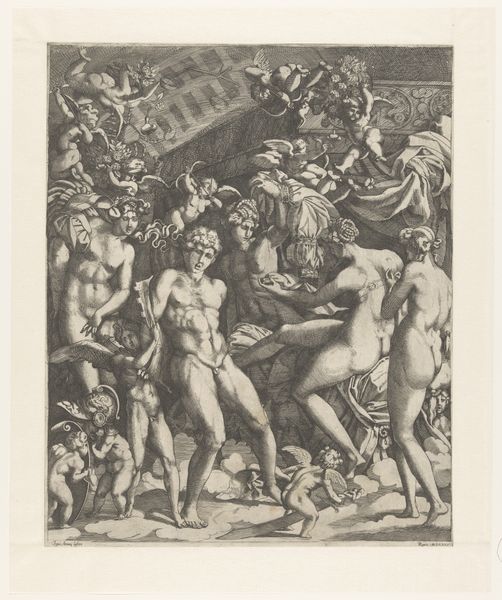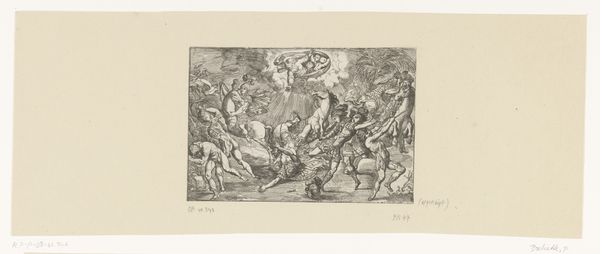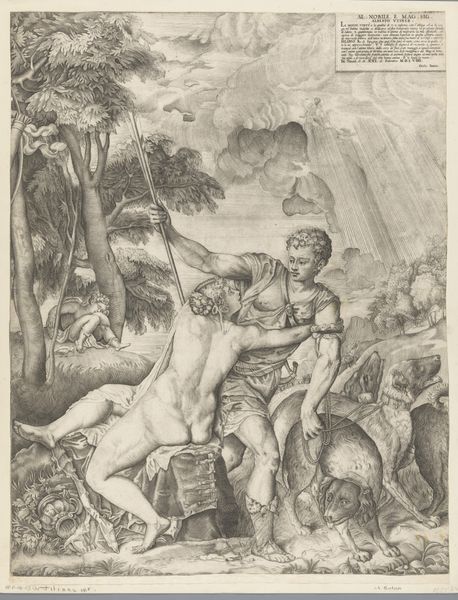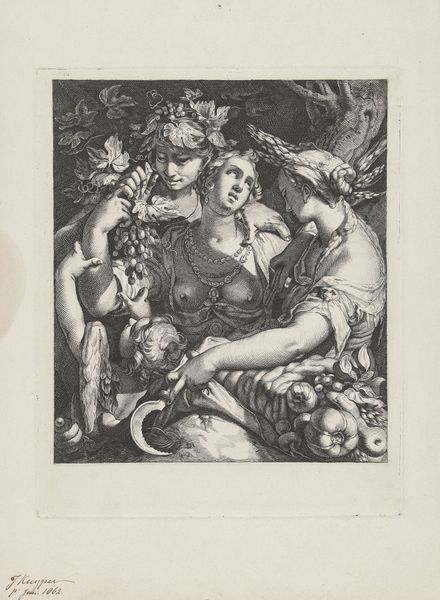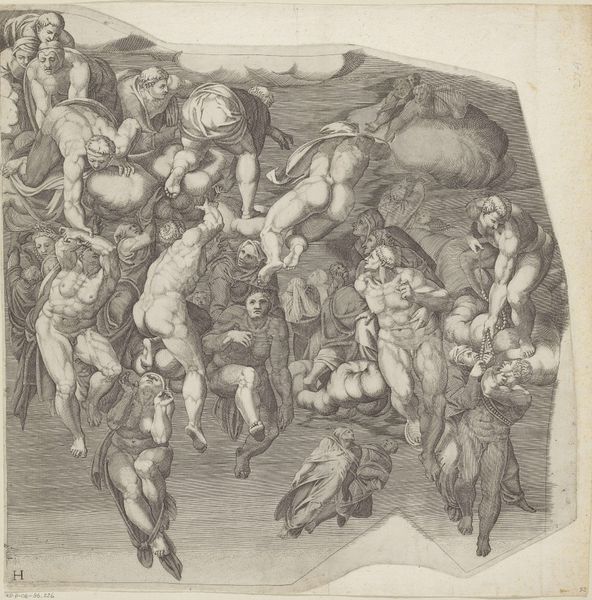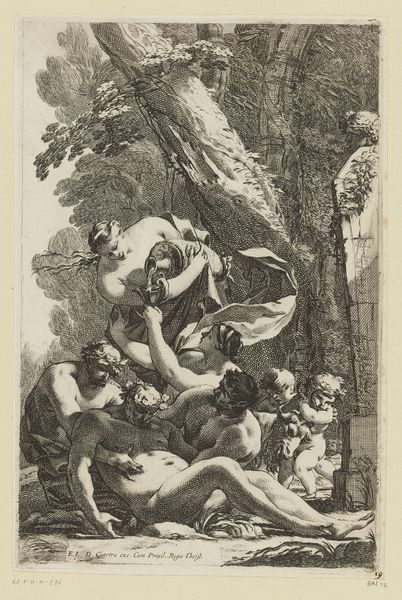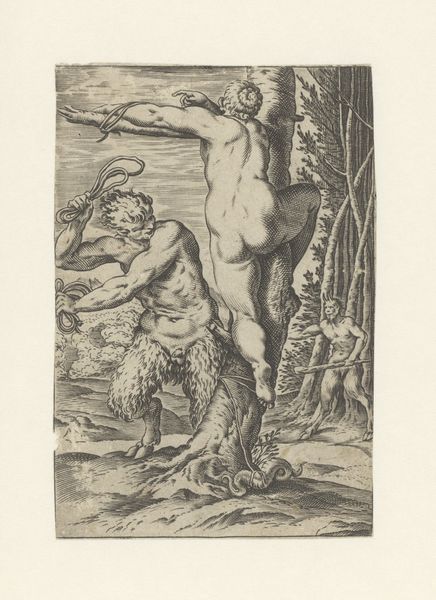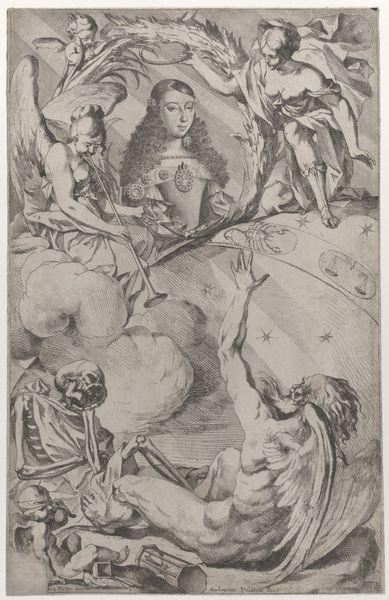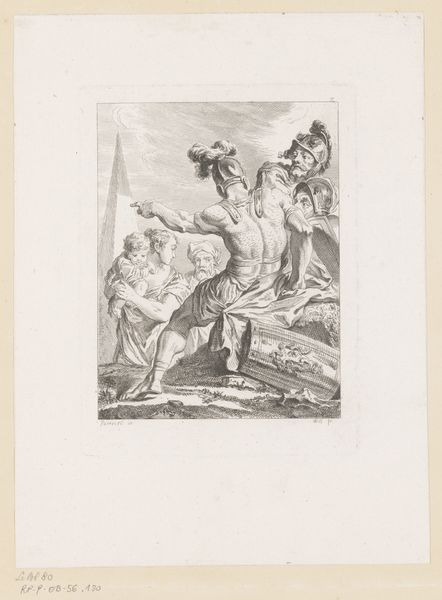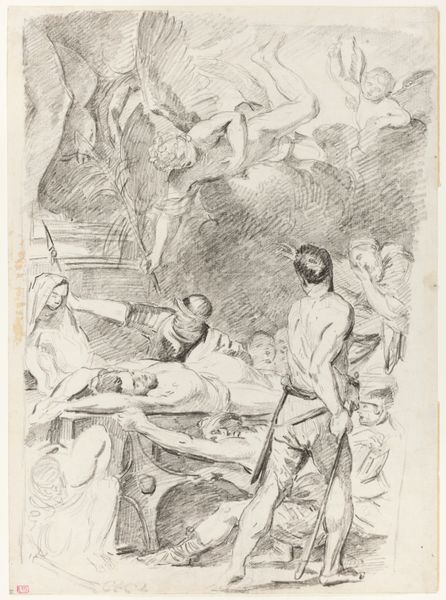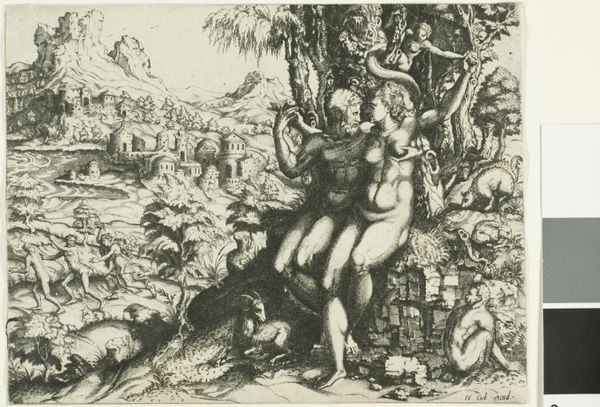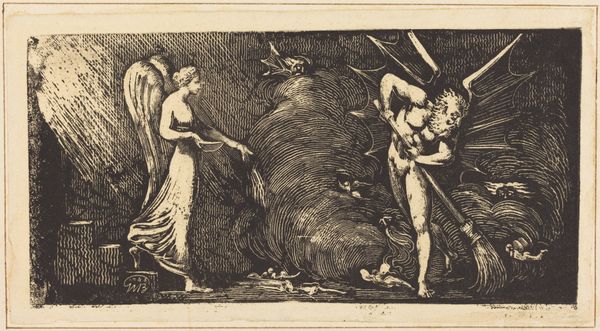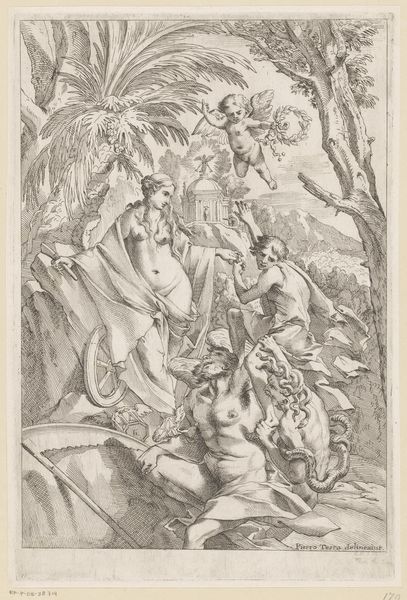
print, etching, engraving
#
allegory
#
baroque
# print
#
etching
#
old engraving style
#
landscape
#
figuration
#
history-painting
#
engraving
Dimensions: height 109 mm, width 122 mm
Copyright: Rijks Museum: Open Domain
Curator: This engraving, which is held at the Rijksmuseum, depicts the moment God confronts Adam and Eve about their disobedience. Though its authorship and date are debated, it is often attributed to Antonio Tempesta and situated somewhere between 1565 and 1630. Editor: The overwhelming impression is one of immediate tension. There's an accusatory energy in God's gesture, even in the linear starkness of the etching. The way Adam and Eve avert their gazes really speaks volumes. Curator: Absolutely. It’s potent in how it visualizes the transition from innocence to self-awareness. The animals present, the horse, the camel, and what appears to be a wolf, carry complex symbolic weight that’s been interpreted differently over time, too. These symbols act as witnesses and contribute to the mood. Editor: The inclusion of such a variety of animals suggests a shift in the established natural order, an unraveling of creation. Even God, hovering amidst what resembles rolling storm clouds, seems agitated and confrontational. And there is something unusual, perhaps in how Tempesta depicts the figures within what appears to be a landscape or how each part feels disjointed. Curator: That "disjointed" feeling might be connected to the debates around authorship and period of production. It does offer a glimpse into how narratives of gender and authority were being negotiated and reinforced through images during this time. Were Adam and Eve truly given agency, or was their downfall inevitable within a patriarchal structure? How is Eve blamed? Editor: You can really trace echoes of that theme throughout art history. And the symbols—God amidst a cloud of wrath—speak so powerfully, even now, about guilt and societal power. To me, it also represents, more broadly, that moment of shattered trust, whether between individuals or between humanity and a divine power. Curator: Ultimately, its potency lies in its ability to evoke fundamental human emotions around the power of choice, culpability, and loss. Its message persists in its historical context. Editor: For me, this really shows that visual language carries immense cultural weight. And those iconic symbols in the scene really allow that emotional resonance to endure over centuries.
Comments
No comments
Be the first to comment and join the conversation on the ultimate creative platform.
